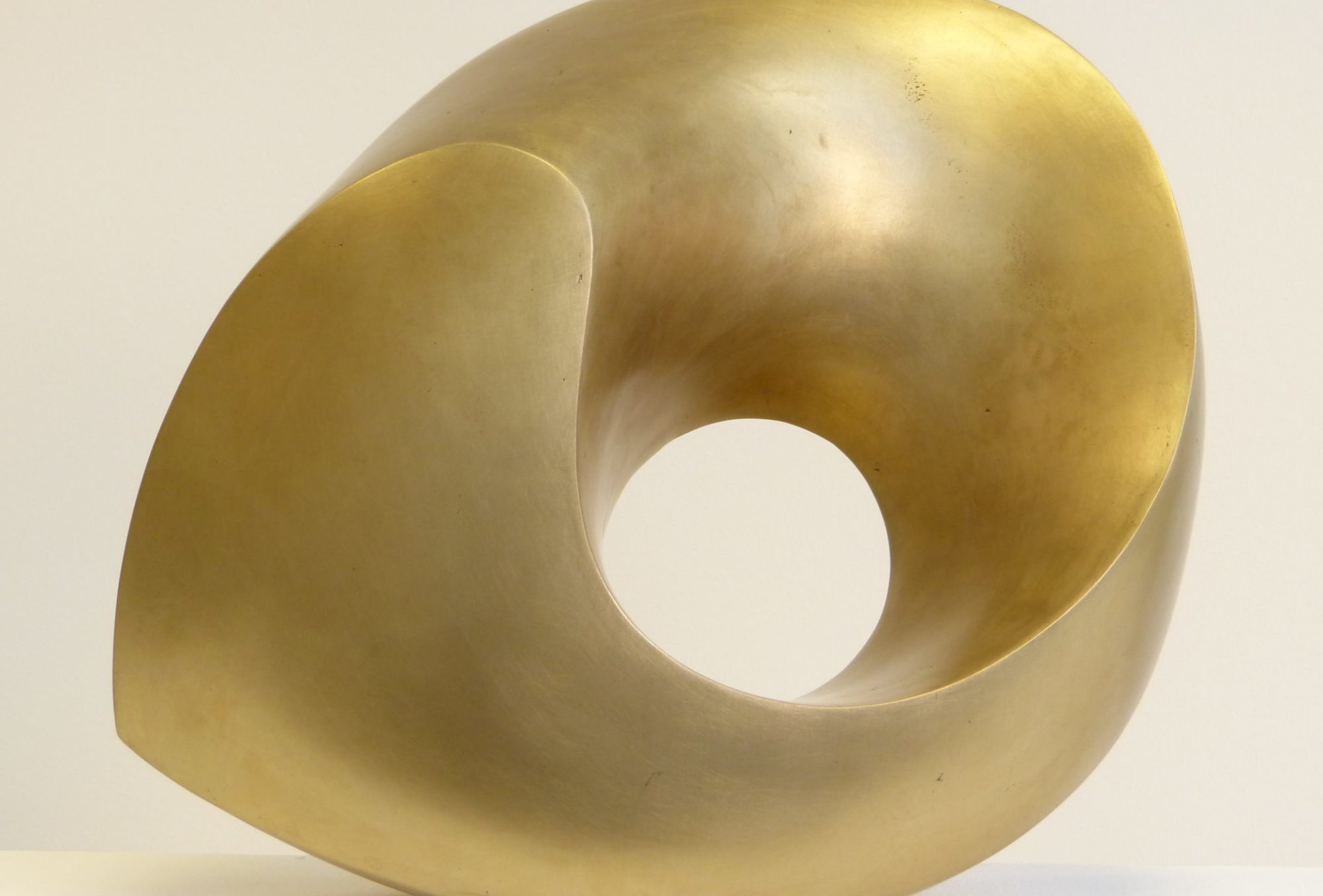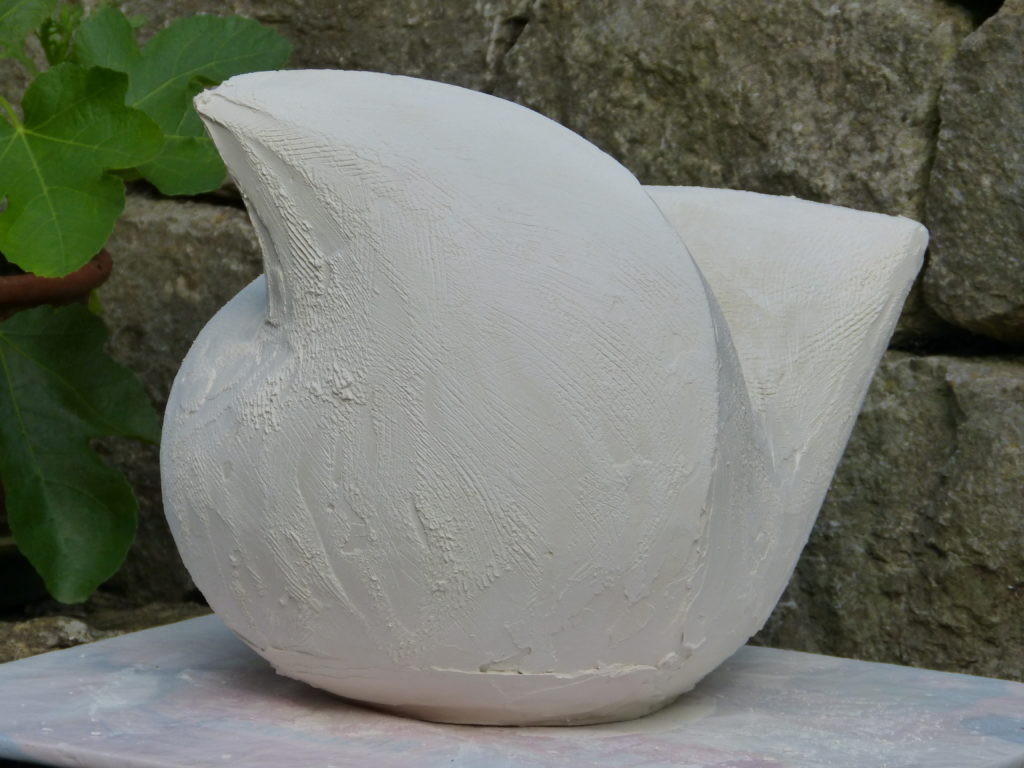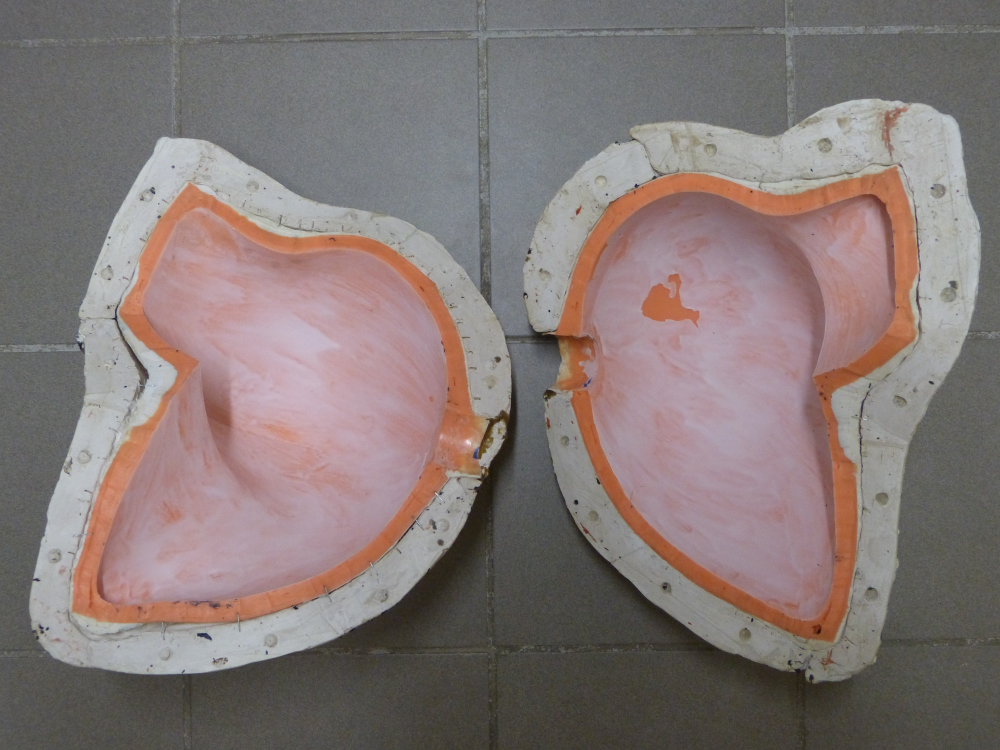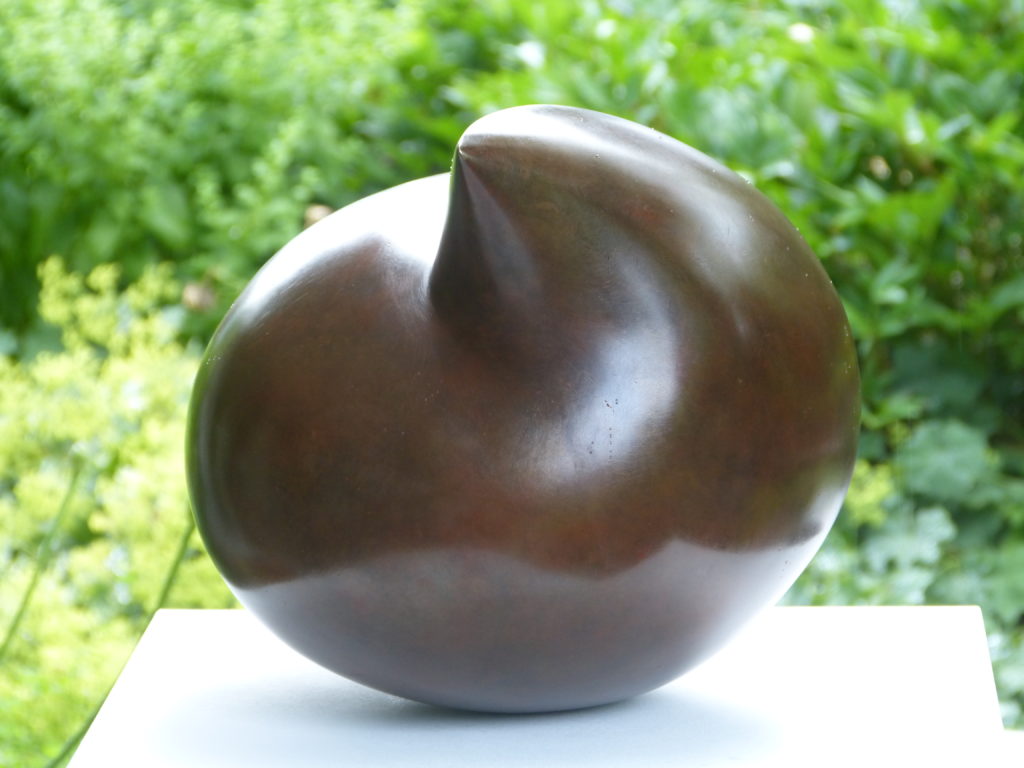The bronze sculpture In Harmony has been in its new home in Schorndorf for a few weeks. It makes me very happy to see her there. It lies in a private garden, here still on a temporary base.

Creating a large bronze sculpture is always an adventure for me. I can work on the model in peace and at my own pace. I keep stepping back and sometimes take a week-long break to go to work with a fresh perspective. Towards the end I become a perfectionist and spend days smoothing the surface.
When the model is finished, I give it to the foundry. Now others are doing the work and I come to watch them from time to time. That sounds good. Nevertheless, it is not easy for me to hand over the work on “my” sculpture to someone else.
In the foundry , the bronze sculpture In Harmony is cast in several parts and then welded together. The surface is then sanded. At the very end, the bronze is patinated. This is the most exciting part for me.
Freshly cut bronze has a reddish-gold hue. Due to environmental influences, it develops a dark brown, sometimes green patina over time. Patination involves treating the surface of the bronze with various chemicals to achieve a specific hue. By subsequently sealing the surface with wax or varnish, an uncontrolled change in color should be avoided.
Patination is an art. With chemicals and heat, new reactions are constantly being brought about in the bronze in numerous work steps. In this case, a dark green patina was created, which in some places almost mysteriously reveals the original golden brown color. It underlines the radiance of the bronze sculpture In Harmony optimal.







